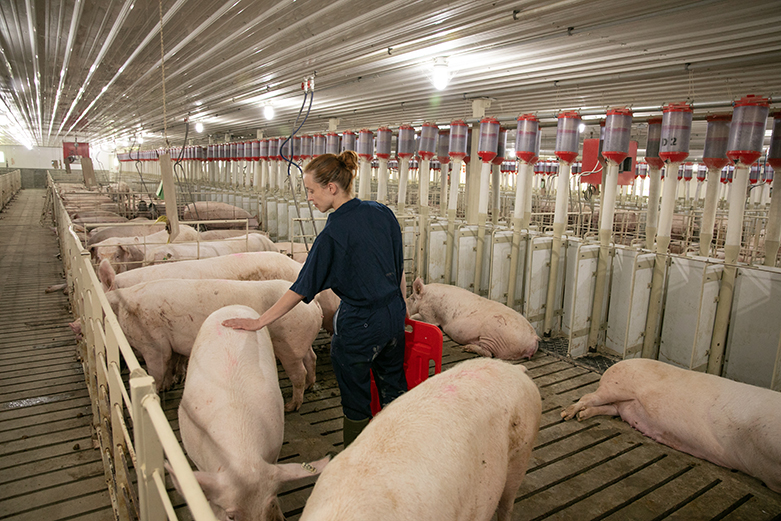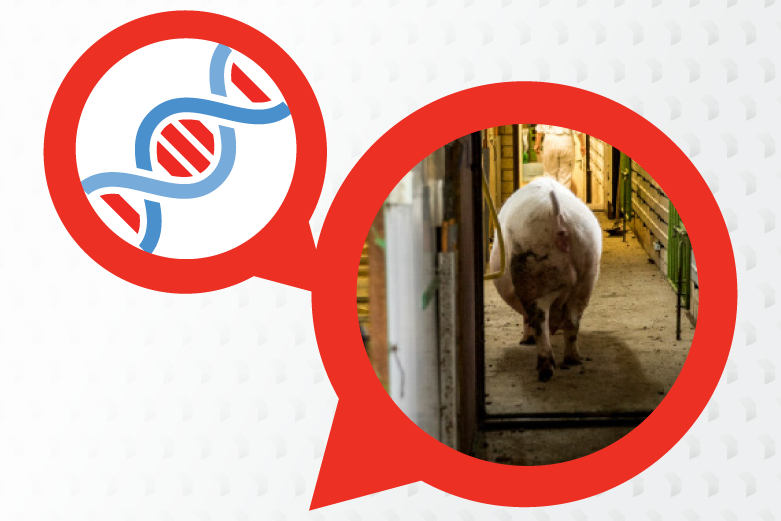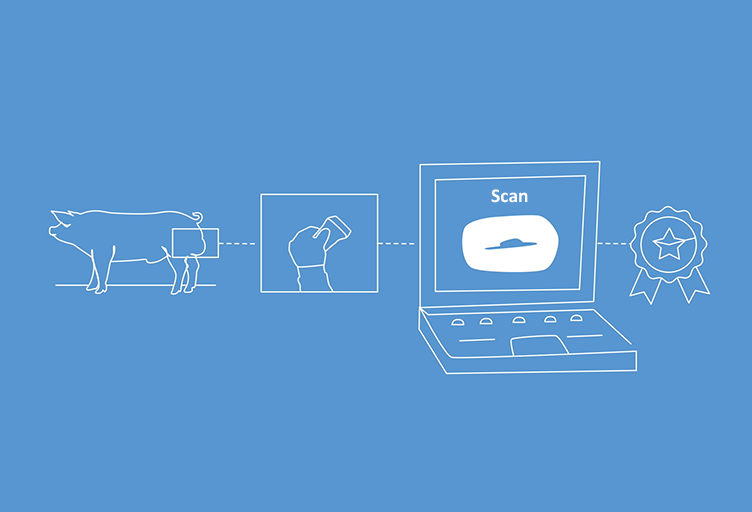Feed efficiency is one of the main key production indicators (KPI) pig producers monitor in their operations. After all, feed cost are the biggest contributors to production costs (approximately 70% of production cost is feed). However, there is no consensus on a unique definition for feed efficiency as it would depend on economic, geopolitical, environmental and food security aspects. For instance, feed efficiency can be defined as the reduction on production costs due to improvements in feed conversion (kg of feed needed to produce 1 kg of body weight gain). For example, a small improvement on 0.1 in feed conversion ratio (FCR) could result in a reduction of €4.18 of feed cost per finisher pig. If we translate this on a per sow basis, this will translate into a reduction of €117.45 per sow per year on feed costs.
Table 1: Economic advantage of improving feed conversion in fattening by 0.1
| Actual | Improvement of FCR by 0.1 | |
|---|---|---|
| Weaning Weight, kg | 7 | 7 |
| Live Endweight, kg | 100 | 100 |
| Weight gain (Wean-to-Finish), kg | 93 | 93 |
| FCR, 1: | 2,3 | 2,2 |
| Feed Usage, kg | 213,9 | 204,6 |
| Feed price, €/kg | 0,45 | 0,45 |
| Feed Costs, €/Slaughter pig | 96,26 | 92,07 |
Economic Advantage
4.19 €/slaughter pig
117.74 €/sow/year
117,739 €/farm/year
As mentioned above, feed conversion was defined as the amount of product per amount of feed. However, what is that final product? In pigs, it could be kg of live weight gained, kg of carcass produced, yield of primal cuts or yield of retailer cuts. In pigs, feed efficiency is usually measured using FCR as it is easy to calculate and easy to interpret. However, there has been an increased interest in developing and using new measures that depict feed efficiency in a more accurate way. Indeed, at least seven different feed efficiency metrics in grower pigs were reported in an Irish study.

Nevertheless, feed efficiency is a multifactorial complex trait, influenced by nutritional management, equipment and facilities, animal health, wean-to-finish management, and environmental factors. Yet, above all, feed efficiency is also a business decision as producers decide the genetic system present on the farm. The genetic system refers to the genetic composition of the sire and dam lines, and the crossbreeding system. Moreover, crucial aspects of the sire and dame lines include a combination of the genetic supplier used by the producer, the specific genetic lines utilised for the terminal sire lines and maternal dam lines, and the genetic improvement program of the genetic supplier.
Genetic improvement of feed efficiency
Pig production is evolving fast and feed efficiency must now reconsider all aspects impacting sustainability of the whole pork value chain. Future breeding programs need to consider a balanced weight between sow herd productivity, fast and efficient growth, robustness and total carcass value for successful and efficient pig production. Therefore, we need to shift from seeing feed efficiency only from a production metric perspective within specific production stages, and start looking at the global efficiency of a system.
Whole-system feed efficiency is about the creation of more kg of protein per kg of feed used across the production chain.
At PIC, our breeding program is based on four main pillars maximising value across the pork chain and improving whole system feed efficiency:
- Sow herd productivity: production of viable quality piglets with optimum birth weight and uniformity of the litter, and efficient sows meaning more meat per sow per litter with reduced inputs.
- Fast and efficient growth: Good terminal sire genetics, high weaning weights and pigs with good performance at heavy weights mean a return on investment from good nutrition and a smaller carbon footprint achieved1 through use of good terminal and maternal genetics
- Robust genetics: This helps sow longevity and lowers mortality across production stages, resulting in reduced antibiotics use, improved animal welfare and reduced labour.
- Total carcass value: Maximising primal values and eating quality reduces waste, improves nutrition, and helps affordability for the consumer.
It is time to change the way we think about feed efficiency in the pork industry. We need to move from feed utilization to thinking about the total resource utilization per kg of animal protein produced.
1For more information about carbon footprint reduction visit: Improving the climate footprint: What does genetic improvement contribute?




